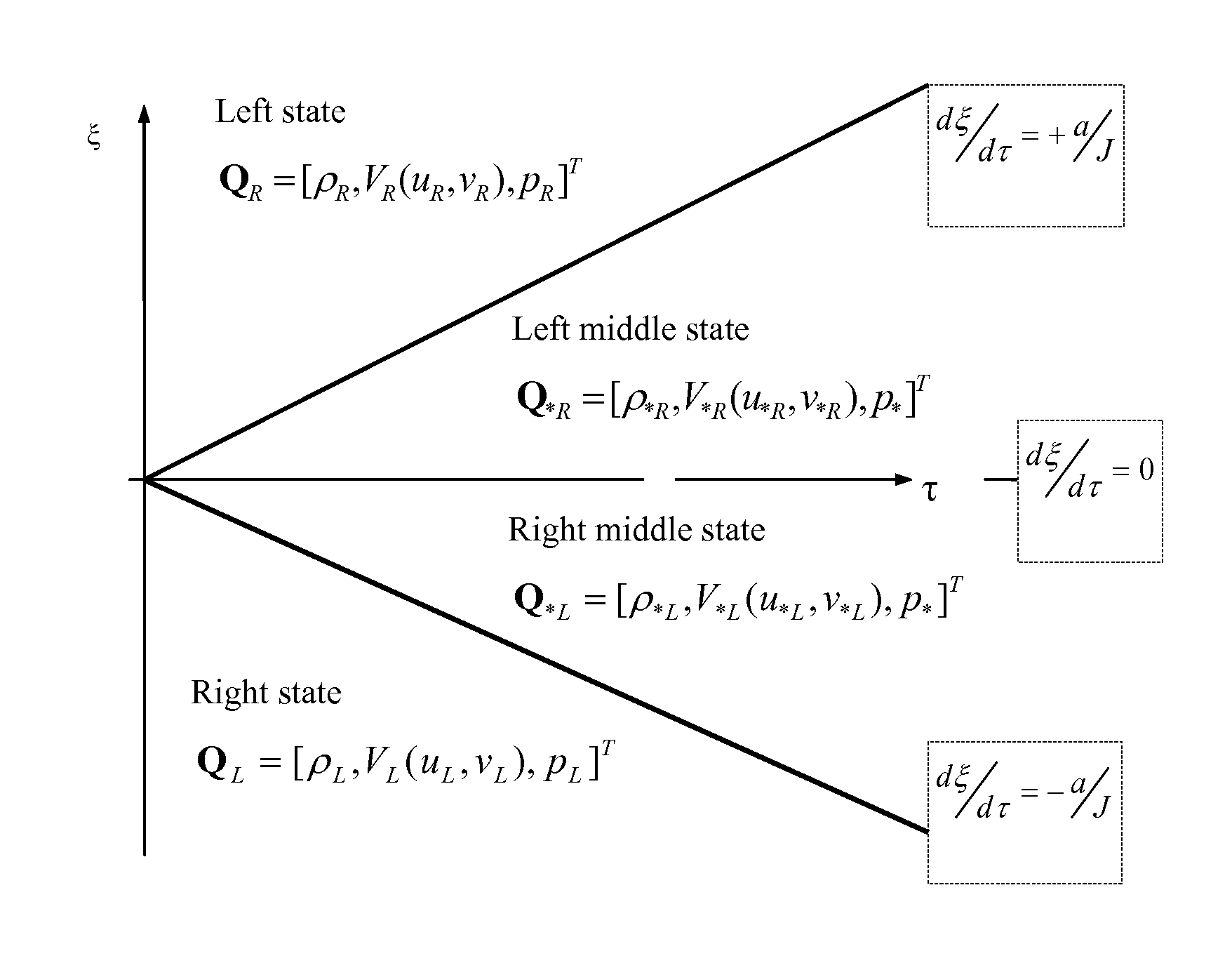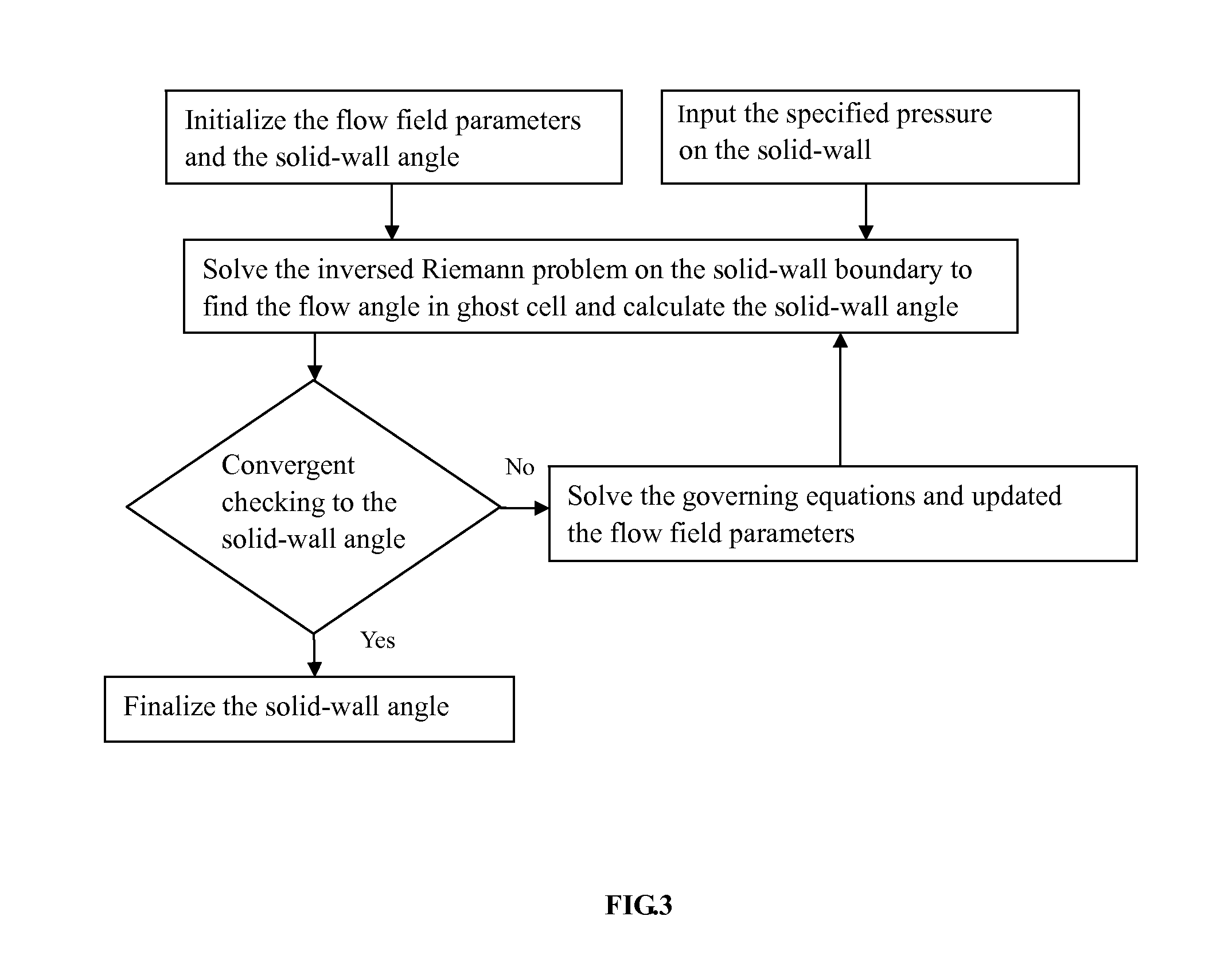Numerical method for solving an inverse problem in subsonic flows
a numerical method and subsonic flow technology, applied in multi-objective optimisation, design optimization/simulation, instruments, etc., can solve the problems of important and time-consuming steps, limited in supersonic flow simulation, and current numerical methods for this class of inverse problems are very time-consuming
- Summary
- Abstract
- Description
- Claims
- Application Information
AI Technical Summary
Benefits of technology
Problems solved by technology
Method used
Image
Examples
embodiment
PREFERRED EMBODIMENT
[0040]An example is to show the detail how to find the geometry of a solid-wall according to the present invention. It is a numerical method for solving an inverse problem, which is the shape design of aerodynamic body in inviscid subsonic flows. The invented method is implemented using computer language codes and the codes are run on computer to calculate the geometry shape of aerodynamic body based on given pressure distribution on the body. The geometry of the example is a convergent-divergent nozzle. Since the prescribed pressure distribution on the geometrically-unspecified solid-wall need to be input in the inverse problem, one can firstly specify this nozzle shape and find the pressure distribution, then use this pressure as the input to find the geometry shape by the invented method. The calculated shape should match with the original shape. The profile of the nozzle's solid-wall is given by a function
y=Hthe−βx2, −1≦x≦1 (39)
where Hth is 0.1 meaning the ...
PUM
 Login to View More
Login to View More Abstract
Description
Claims
Application Information
 Login to View More
Login to View More - R&D
- Intellectual Property
- Life Sciences
- Materials
- Tech Scout
- Unparalleled Data Quality
- Higher Quality Content
- 60% Fewer Hallucinations
Browse by: Latest US Patents, China's latest patents, Technical Efficacy Thesaurus, Application Domain, Technology Topic, Popular Technical Reports.
© 2025 PatSnap. All rights reserved.Legal|Privacy policy|Modern Slavery Act Transparency Statement|Sitemap|About US| Contact US: help@patsnap.com



